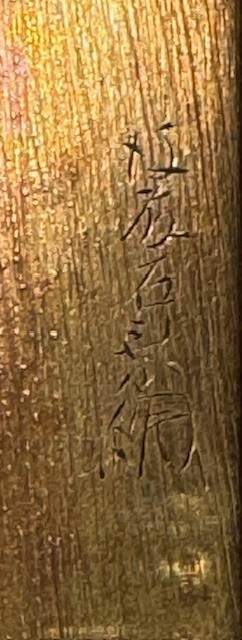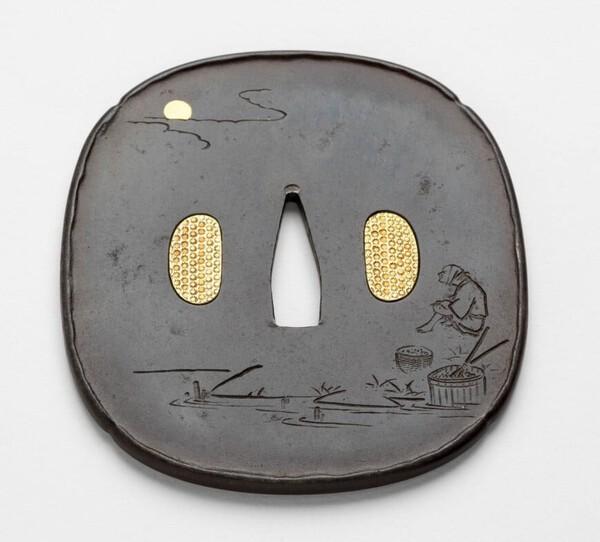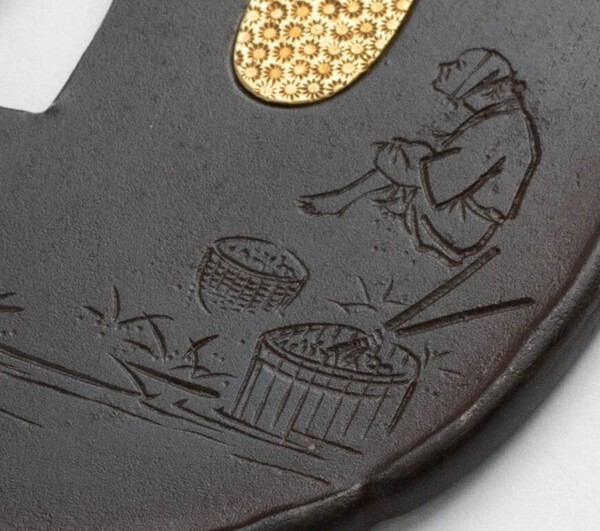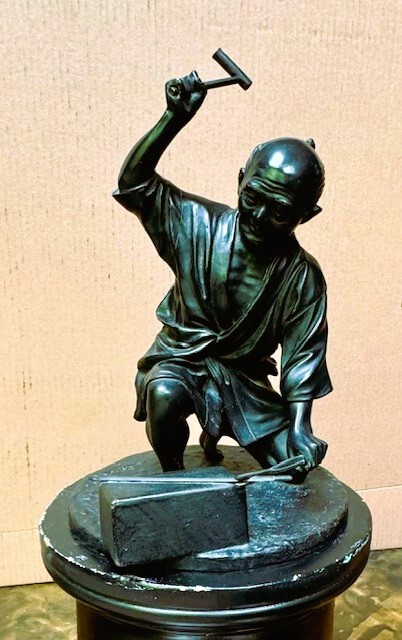
Kanenaga
Gold Tier-
Posts
276 -
Joined
-
Last visited
Content Type
Profiles
Forums
Events
Store
Downloads
Gallery
Everything posted by Kanenaga
-
Kiril, paper or no paper you want to be very careful here. The mei on the katana looks odd, the last three kanji unnecessarily crowded together, and possibly cut with a different chisel (and hand) from the upper part of the mei. Also, $25K is way low for a true Naotane daisho pair of blades, expected retail (based on cruising dealer websites) should be 2-3x. Both swords and papers can be messed with -- we had a recent example here. But I'm no calligraphy expert, so let's see what others think.
-
Your tsuba #1 is a very typical example of this maker's work, both in terms of the plate shape and the characteristic flat-inlay gold decoration of grasses and insects. Instantly recognizable. Regrettably, I can't recall his name, but hopefully one of the tsuba collectors here will. He sometimes signed his full mei, but often just the kao. Dale, where are you?
-
About sword A, from the nakago-jiri and the use of the "mori" kanji (can't make out the other), I suspect this may be a kongobei blade.
-
Member since the AB was formed.
-
Dear friends, This kozuka came on a tanto koshirae. The mei is cut with a fine chisel, and is not easy to see even with the item in hand, but I finally got a pretty clear photo. Could someone kindly translate for me?
-
Just a quick thanks to the members
Kanenaga replied to Brian's topic in General Nihonto Related Discussion
Speedy recovery Brian. You are not just the owner of this Board, you are its very heart and soul, and we are all very grateful. -
There are several prominent groups of swordsmiths in which the nidai is considered more skilled than the shodai (and priced accordingly): Seki Kanemoto (Magoroku) Kawachi (no) kami Kunisuke (naka-Kawachi) Settsu Tadatsuna (Ikkanshi) Kunisada (Shinkai) Sengo Muramasa So it's not a blanket "shodai was best."
-
Is Ando still in business?
Kanenaga replied to Tom Darling's topic in General Nihonto Related Discussion
Spoke with him and looked at some of his swords at DTI. -
It's a Kaneie-style tsuba, and I quite like it. Hitsuana are often seen filled in, but I've never seen the nakagoana filled.
-
Nice fittings. The habaki belongs in Bruce's old "cat-scratch habaki" thread, if not already there.
-
So it's a kinzogan mei, an attribution rather than a signature. And the kakihan likely belongs to whoever did the inlay work, rather than Sa himself. Just my opinion, of course.
-
Kakihan on a blade by O-Sa? May we see it?
-
delayed export permits
Kanenaga replied to lonely panet's topic in General Nihonto Related Discussion
I was unaware that an export permit is required for a tsuba. -
I think Ron's question is about the depiction of what we call a "rain dragon." All the illustrations in the Sesko article show the kurikara with a "normal" dragon.
-
Suriage or O-suriage on "shinto" (or later) sword.
Kanenaga replied to sc72's topic in General Nihonto Related Discussion
Perhaps good to mention that the condition of the nakago is important for the monetary evaluation of a shinto or newer sword. Suriage (or machi-okuri, or mumei-ness) significantly diminishes the value. -
Concerning Dale's tsuba from the Spencer Museum supposedly showing a man washing potatoes, but no potatoes to be seen -- well, here's another with the same theme, including the 2 sticks. This one is by Goto Ichijo, and the potatoes are presumably in the basket. So maybe this is a real theme? Title: Tsuba with a picture of sweet potato washing under the moon
-
Still available?
-
I've been to the NBTHK Museum (both old and new), the Tokyo and Kyoto National Museums, and the Sano Museum. In each of these I thought the lighting was acceptable for a static display of swords. But "static" is not how we usually appreciate blades, so I would like to see museums get over their prohibition against bringing and using a small flashlight of one's own. TTBOMK, light cannot injure steel (curator alert!). I second Arnaud's suggestion about the usefulness of a quality monocular, especially for viewing fittings behind glass. These take a little practice for orientation, because the field of view tends to be very small. When the Mitsumura collection was on display several years ago, the Nezu Museum would actually lend you one of these, and it was perfect for seeing the fabulous details.
-
What exactly do I have? I'm stumped!
Kanenaga replied to Onigoroshi's topic in General Nihonto Related Discussion
Apologies for the late post, just saw this thread. Here's a silver wakizashi, this one with horimono, basically a tsunagi for the mounts by Goto Ichijo. I haven't tested it myself , but I'm inclined to believe the label. From the Mitsumura collection. -
We should keep an eye out for it at the SF show in 3 weeks.
-
Appreciate your comments, Colin. The base and anvil are one piece. And the signature is on the base. So I think all original. But I agree a new stand may be in order, so I'll be on the lookout. BTW, that figure is quite lovely. Yours? And what is Gyokko/Miyao ?
-
In the photos, the sculpture sits on a wood stand which came with it (FWIW) and which needs some TLC. The base is about 3/8 inch high and open underneath, and fixed to the figure with two rivets. The whole things is quite heavy for its size, but I expect the figure is hollow. The sword has a shinogi line, no sori (yet?), no ana (yet), and a short nakago with a kengyo jiri. What is a "general no-kaji" ?
-
I hope these photos show well, it's all black. It's 13 inches tall by 8 inches at the circular base. Comments?









